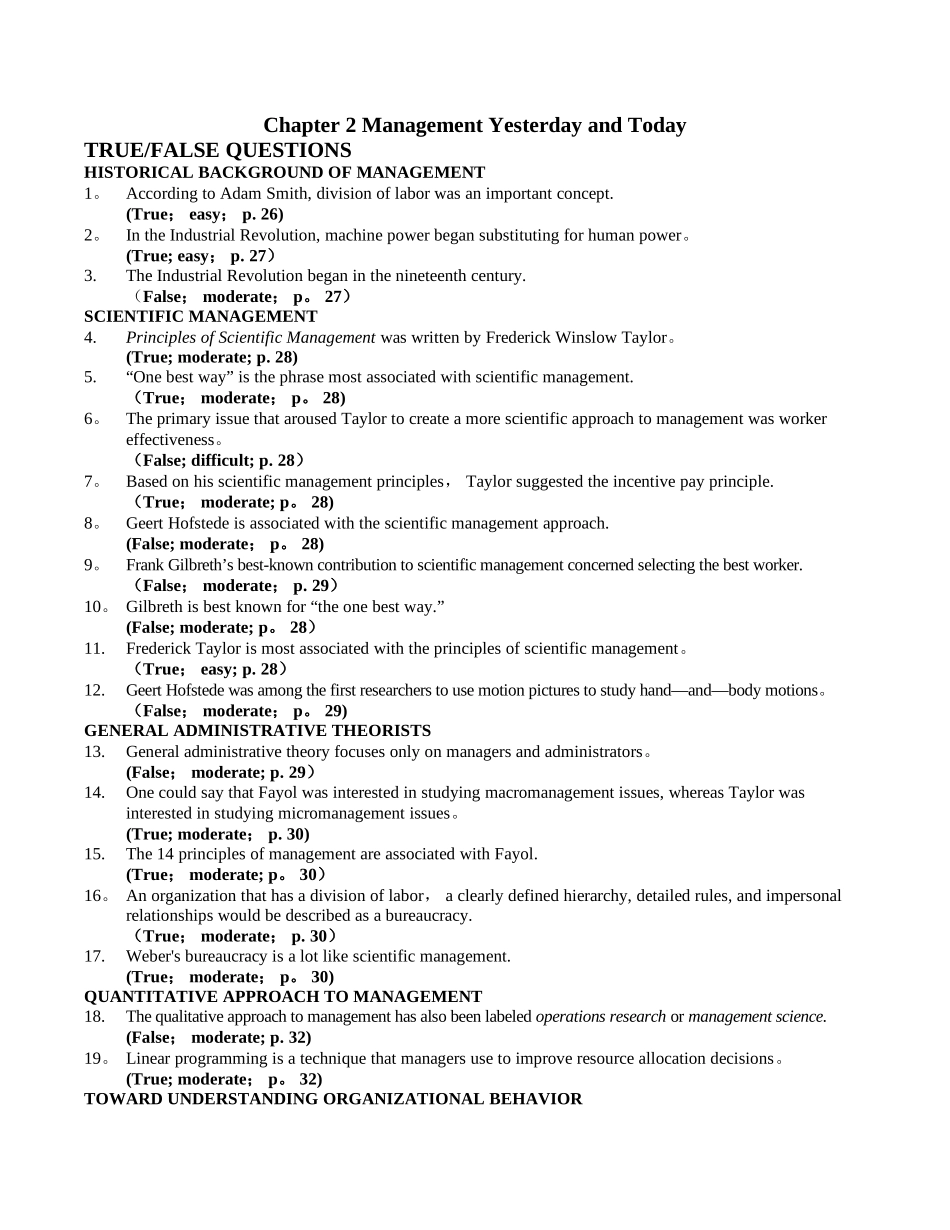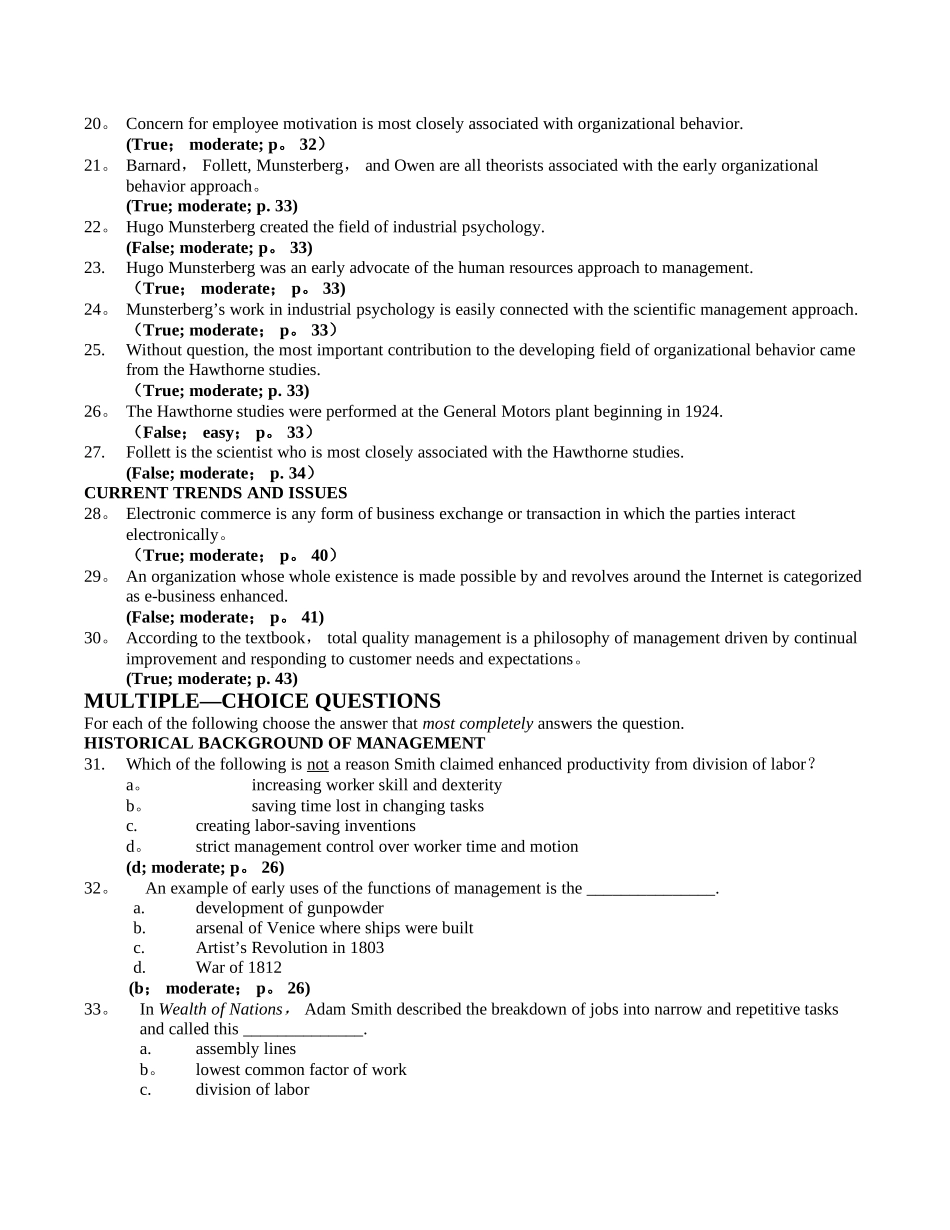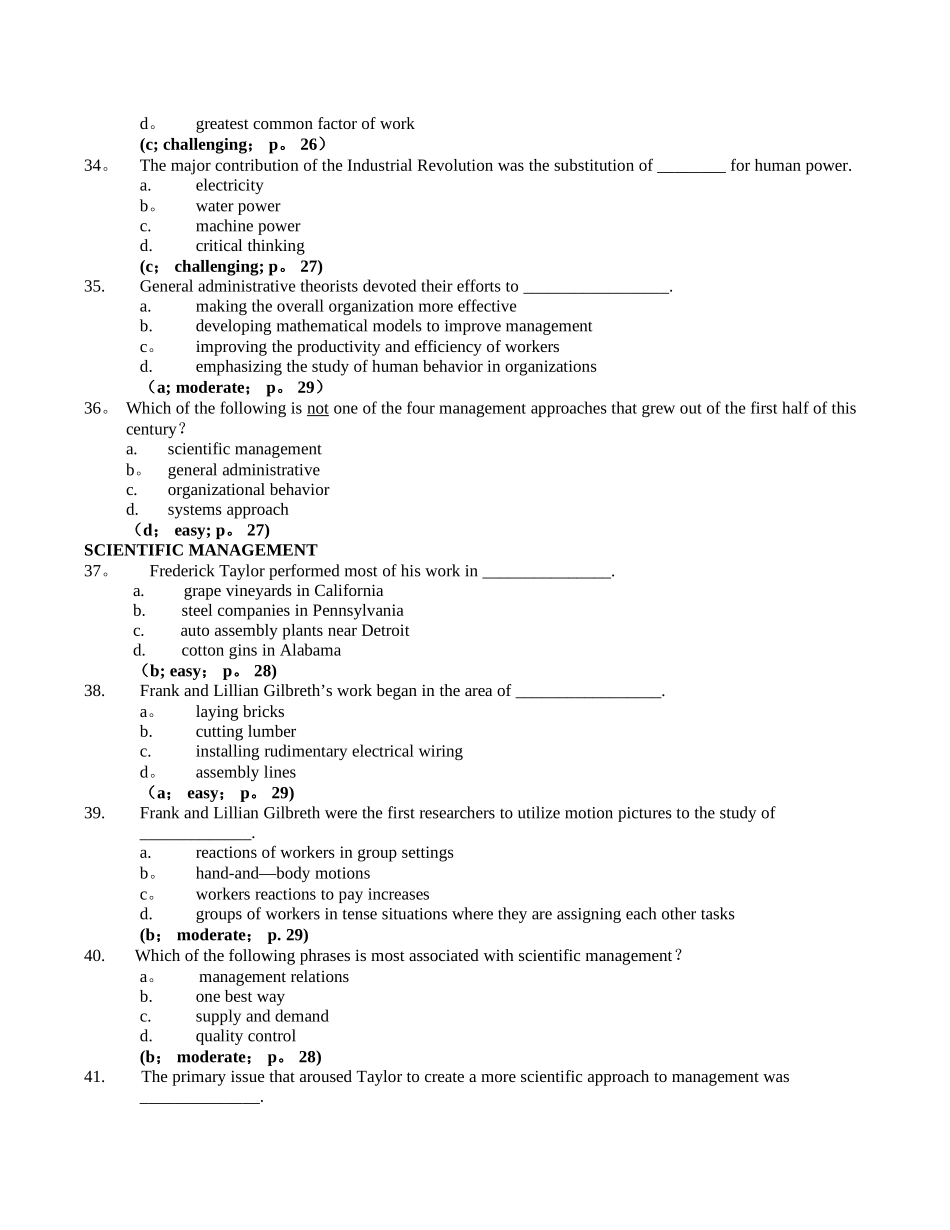Chapter 2 Management Yesterday and TodayTRUE/FALSE QUESTIONSHISTORICAL BACKGROUND OF MANAGEMENT1。According to Adam Smith, division of labor was an important concept.(True; easy; p. 26)2。In the Industrial Revolution, machine power began substituting for human power。(True; easy; p. 27) 3.The Industrial Revolution began in the nineteenth century.(False; moderate; p。 27) SCIENTIFIC MANAGEMENT4.Principles of Scientific Management was written by Frederick Winslow Taylor。(True; moderate; p. 28)5.“One best way” is the phrase most associated with scientific management.(True; moderate; p。 28)6。The primary issue that aroused Taylor to create a more scientific approach to management was worker effectiveness。(False; difficult; p. 28)7。Based on his scientific management principles, Taylor suggested the incentive pay principle.(True; moderate; p。 28)8。Geert Hofstede is associated with the scientific management approach.(False; moderate; p。 28)9。Frank Gilbreth’s best-known contribution to scientific management concerned selecting the best worker.(False; moderate; p. 29)10。 Gilbreth is best known for “the one best way.”(False; moderate; p。 28)11.Frederick Taylor is most associated with the principles of scientific management。(True; easy; p. 28)12.Geert Hofstede was among the first researchers to use motion pictures to study hand—and—body motions。(False; moderate; p。 29)GENERAL ADMINISTRATIVE THEORISTS13.General administrative theory focuses only on managers and administrators。(False; moderate; p. 29)14.One could say that Fayol was interested in studying macromanagement issues, whereas Taylor was interested in studying micromanagement issues。(True; moderate; p. 30)15.The 14 principles of management are associated ...


